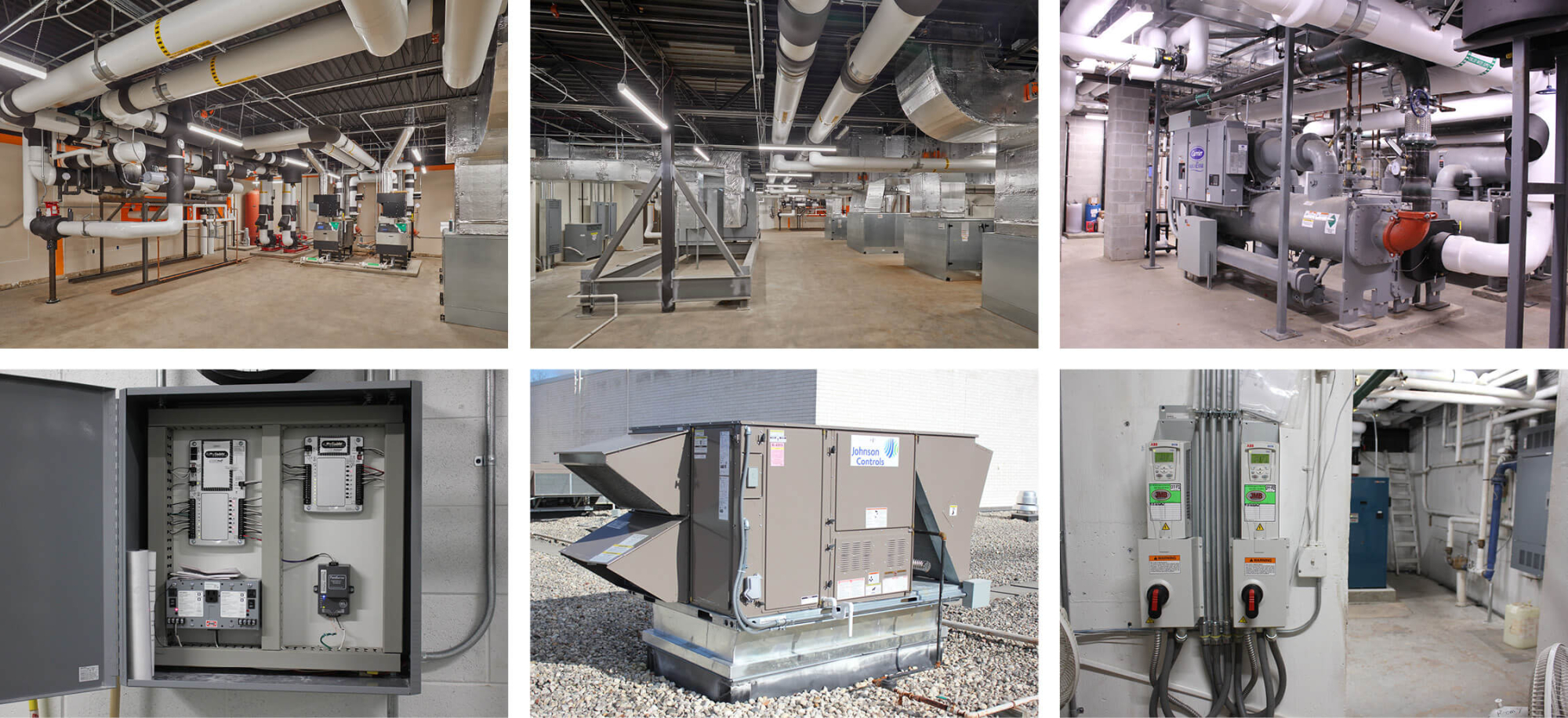Guaranteed Energy Savings Contracts: An Efficient and Viable Procurement Option
October 19, 2022

October 19, 2022

Over $15 Billion worth of Guaranteed Energy Savings projects have been completed over the past 20 years throughout the nation’s K-12 Schools. Most states in the U.S., including Illinois, have enabling legislation governing the use of Guaranteed Energy Savings Contracts, sometimes referred to as Energy Performance Contracting.
Article 19b of the Illinois school code governing Guaranteed Energy Savings Projects is an option when a school district is looking to renew critical infrastructure systems that are energy-intensive and drive ongoing operating costs. With literally hundreds of Illinois K-12 Schools utilizing the Article 19b procurement method since its inception over 30 years ago, misperception persists. Some of the highest-profile school districts in Illinois, with some of the most well-respected business managers in the industry, have chosen this procurement method to address planned renovation and deferred maintenance for the most critical and costly equipment, such as boilers, chillers, unit ventilators, building controls, and lighting.
Similar to the idea that one would never purchase a car without knowing the gas mileage, school administrators are expected to be informed about the total cost of ownership. The lowest upfront cost may be the best option for some of this equipment, but sometimes the cheapest equipment can saddle school districts with decades’ worth of high energy and maintenance costs.
AN OVERVIEW OF ENERGY USE AND ENERGY EFFICIENCY OPPORTUNITIES, energystar.gov
Replacing a school’s infrastructure systems usually requires more than just a “one for one” replacement. Instead, newer technology, modern building codes, and space utilization changes are some reasons these systems require re-design by qualified engineers. But with so many decisions on high-efficiency designs and initial cost considerations, how does a school district decide how to procure new systems?
Renovating buildings to make them more comfortable and energy-efficient is nothing new. In the early 1880s, at what is now the University of Whitewater, Wisconsin, Professor Warren S. Johnson became frustrated that his classroom was either too cold or too hot. The janitors would come in to measure the temperature and manually adjust dampers—which was disruptive to his teaching. So, Professor Johnson invented, and in 1883 patented, a device called the “electric tele-thermoscope.” With this, the industry of controlling classroom comfort was born. Nine years later, Willis Carrier invented air conditioning to help control humidity for a New York printing press. Thus, the modern Heating, Ventilation, and Air Conditioning (HVAC) evolution began.
Guaranteed energy savings contracts, also known as performance contracts, have been used for decades to provide cost-effective facility improvements. Over 30 years ago, Illinois adopted Article 19b of the School Code: Schools Energy Conservation and Savings Measures. This legislation allows public schools more flexibility in procuring facility improvements that reduce utility and operating costs.
The following provides an overview of Illinois’s process and addresses common misconceptions about the legislation.
The formal procurement process begins with a Request for Proposal (RFP). This process allows the district to choose which ESCO they want to partner with to design, manage and install their project. However, previous to this step, the community may have had discussions with one or more ESCOs to learn more about the feasibility and process for implementing a project. If the district utilizes an ESCO to help prepare the RFP documents, it must disclose that relationship in the RFP.
The RFP illustrates the intent of the district to solicit proposals from qualified ESCOs and outlines the due date, evaluation criteria, and instructions for how to respond. The RFP must be posted at least 30 days before the due date. A more detailed list of required items to include in the RFP and timing requirements are outlined in the legislation.
Utilizing an RFP is not a traditional bid process. By design, the RFP process typically does not yield an “apples to apples” comparison of the competing companies. Instead, it allows the district to evaluate ESCOs based on creativity, approach, pricing methodology, references, and experience.
Once the administration has decided on a company to select, they will ask the board to approve their recommendation to select the qualified provider. In some instances, additional scope and pricing negotiations may need to be finalized before developing and signing a Guaranteed Energy Savings Contract.
In most cases, the ESCO acts as the primary manager of the entire process, from design to subcontracting through installation. Like the Design-Build concept, the ESCO usually has in-house design engineers and project managers to create increased design quality and constructability. This approach affords the district a single source of accountability for the entire project from start to finish.
While every ESCO may have differing in-house capabilities, it is responsible for building a team of subcontractors. The following is how an ESCO might manage subcontractors using a “flat” organizational structure. This type of structure increases accountability for each subcontractor. Another significant benefit is the decrease in mark-ups which often saves the district high installation costs. Different ESCOs have different contracting styles and approaches, so districts should be diligent in reviewing the ESCO’s subcontractor selection and project management approach during the RFP stage.

Most Guaranteed Energy Savings Contracts require the ESCO to calculate pre- and post-construction energy use and report those savings to the district or school board annually. To do this, the ESCO will first calculate a baseline energy use for the buildings. Using several methods, the ESCO will then calculate the energy reduction that will be achieved after the improvements are complete and will continue to monitor savings according to the performance agreement. Typically, the energy savings are measured and verified (M&V) based on methods within the U.S. Department of Energy (DOE) M&V Guidelines: Measurement and Verification for Performance-Based Contracts. Projects may also include operational savings. These savings occur when an improvement implemented under the contract reduces future repair or replacement labor and material monies that would have otherwise been expended if the improvement was not implemented. Some energy savings may be stipulated with the district, such as future energy rates, weather, and building occupancy.
According to the Energy Analysis and Environmental Impacts Division of Berkeley Labs, only about 63 percent of K-12 districts continue the Measurement and Verification process throughout the project. Many school communities utilize the M&V service for around three years until they feel comfortable with the realized savings.
The funding for Guaranteed Energy Savings Projects is often misunderstood. These projects are not “Free.” And most Illinois K-12 districts do not pay their ESCOs with their future energy savings. Those are called “shared savings programs” and are not utilized by Performance Services.
Most of the Guaranteed Energy Savings Contracts for Illinois K-12 School districts are funded similarly to how a district would fund any other construction project. The ESCO and the district negotiate a total turnkey price for a set scope of work, and the district pays the ESCO during the construction period based on an agreed-upon payment schedule. For example, districts can use existing capital or debt service options (such as a bond issuance) or some combination.
According to Berkeley Labs, about 58 percent of K-12 districts use 100 percent financing, and 33 percent of districts use a combination of cash and financing to fund the improvements.
The district will also agree to a future annual cost for the ongoing measurement and verification (M&V) of the savings, typically less than .5 percent of the project cost annually, and, as described earlier, can typically be canceled at any time.
In summary, the district purchases the project upfront and will then “justify” the repayment of its bonds or fund balances with the ongoing savings generated from the project.

Illinois public school districts have several choices for addressing deferred maintenance. Article 19b of the school code governing Guaranteed Energy Savings Projects is one choice. This legislation can be considered when a district focuses on the most critical building components like chillers, boilers, lighting, solar, building controls, and other energy conservation measures. Any equipment that will significantly affect future operating budgets can be purchased through this procurement option. For many districts with large construction projects, ESCOs can be hired as part of the overall design team and work alongside the district’s architects and construction managers. Hiring an ESCO and an architect does not have to be mutually exclusive.
Illinois legislation provides school districts flexibility when choosing an Energy Services Company through an RFP process. The selected company will develop, manage and install a complete turnkey project. This streamlined design-build approach eliminates the finger-pointing of having multiple contracts with multiple providers. Additionally, combining these two trades under one roof increases the quality of design and installation. And the financial guarantees create even more accountability to ensure the project is installed and commissioned correctly from the start yielding quantifiable energy savings that are measured and verified for years to come.
The German philosopher Arthur Schopenhauer said, “All truth passes through three stages:
Guaranteed Energy Savings Projects are a proven procurement method to renovate and renew Illinois public schools.
Is your district ready for a guaranteed energy savings project? Contact us for an onsite, no-obligation facility assessment. With decades of experience creating optimal learning environments for K-12 schools, we have the expertise to help you with your next project.
